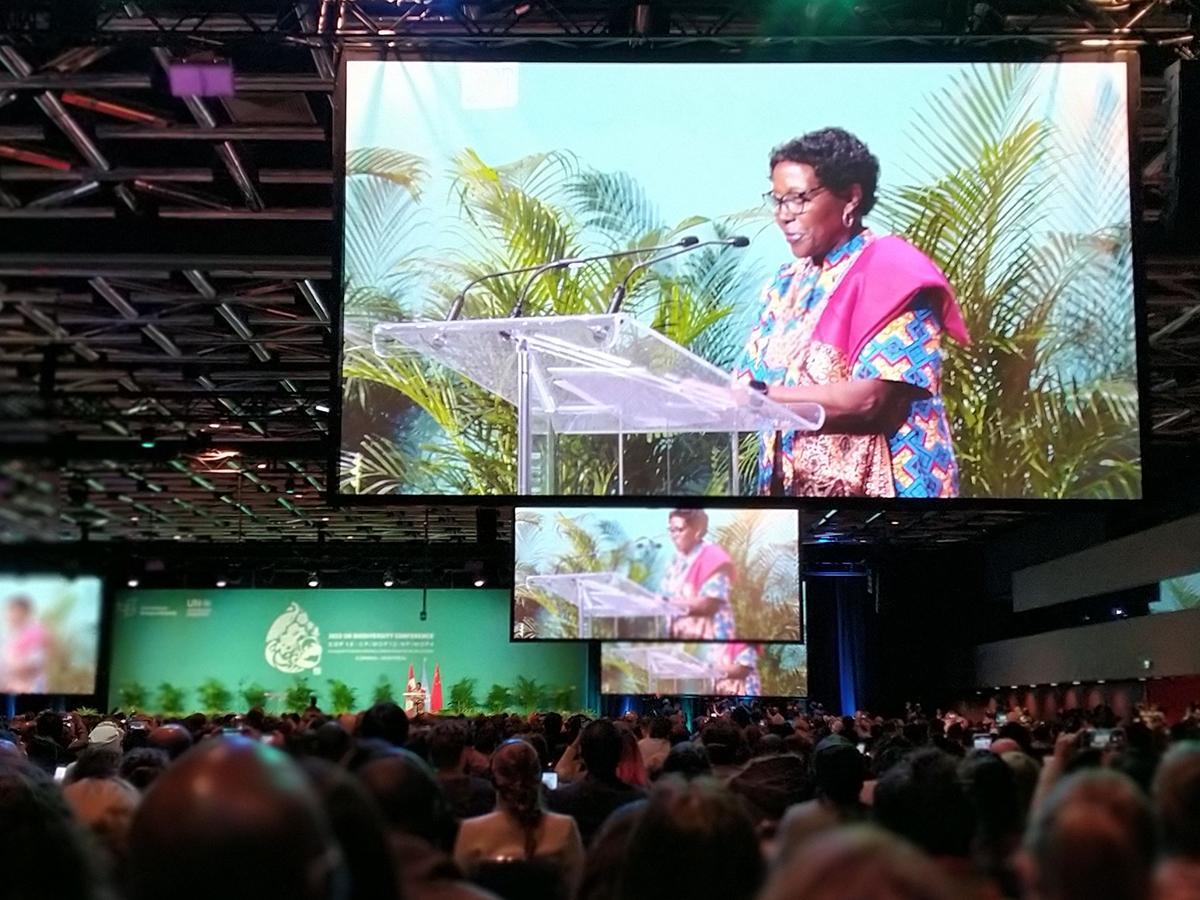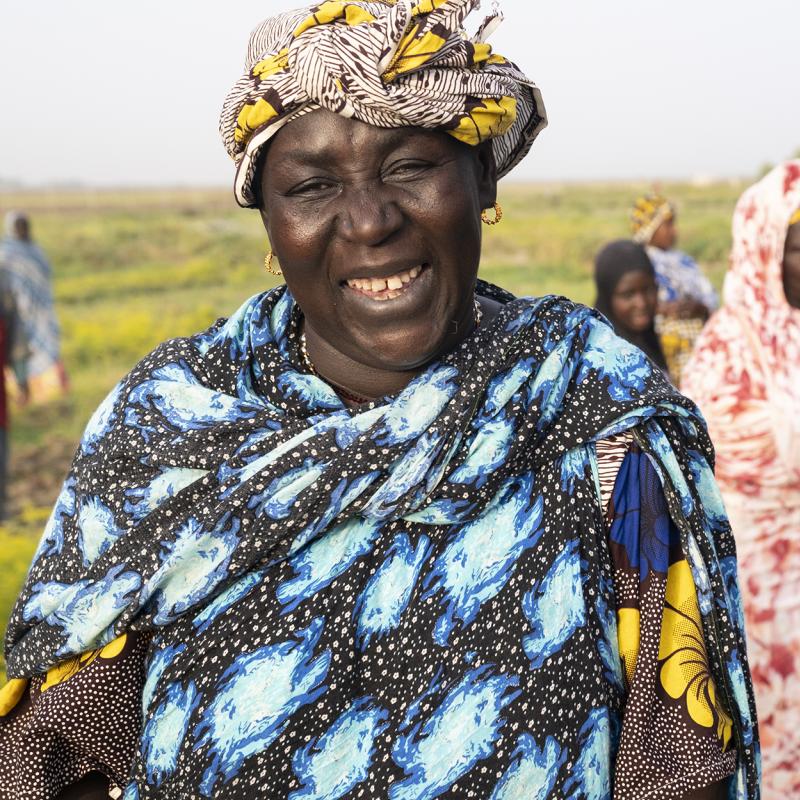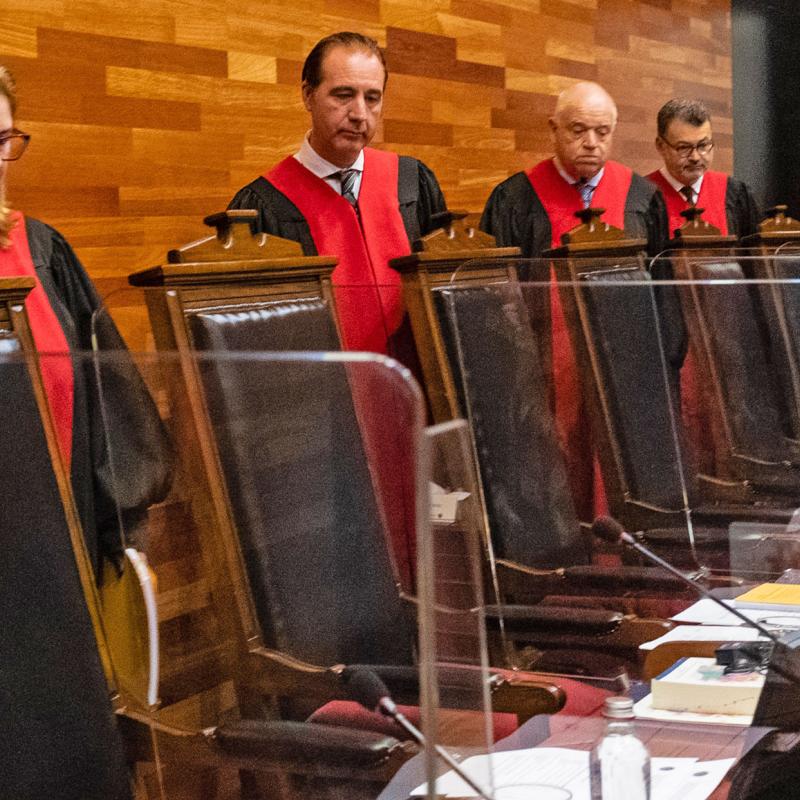
‘The UN Biodiversity Conference was unexpectedly a great success’
The international community met in Canada shortly before Christmas and adopted the new Kunming-Montreal Global Biodiversity Framework (GBF). In this interview, Silke Spohn, who heads the GIZ sector programme Conservation of Biodiversity on Land, explains its strengths and weaknesses, and what it means for GIZ.
A new global biodiversity framework was adopted at the UN Biodiversity Conference in Montreal. Right up until the conference began, a good result seemed fairly unlikely. Did the outcome surprise you?
It really is a great achievement, which we didn’t necessarily expect. For a long time much of the document was in brackets and therefore not agreed on. At GIZ, we are therefore very relieved about the outcome, because global biodiversity loss is alarming, and there is an immense need to act. So the new framework agreement is a massive step forward, with a vision to be achieved by 2050 and 23 targets to be reached by 2030.
What made the agreement possible in the end?
All the parties came to Montreal with a good common understanding. There was a consensus that nature loss cannot be allowed to continue at the current rate and that the scientific findings, chiefly of the World Biodiversity Council IPBES, must be taken seriously and accepted. Incidentally, this is distinct from the climate debate, in which scientific findings are contested by different sides time and again.
In your view, which parts of the final paper are most significant?
I think the ‘30x30’ target is important. At least 30 per cent of the Earth’s land and sea is to be protected by 2030. This means that there is also a lot of work to do, though – currently only 17 per cent of land and around 8 per cent of sea areas are protected. In addition, 30 per cent of areas of degraded ecosystems are to be under restoration by 2030. That too is very good news, as is the target to half the risk caused by pesticides and to phase out or reform subsidies that harm biodiversity by at least USD 500 billion per year by 2030 worldwide. Another point to highlight is the commitment to strengthening indigenous people and local communities, whose vitally important role in preserving biodiversity has been recognised.
What parts of the agreement do you find less convincing?
The wording of some passages is very vague. The target on conservation, for instance, states that 30 per cent should be effectively conserved and managed, but no definition is given as to when an area is deemed to be effectively conserved and managed. Indicators still need to be developed. So there is still plenty of follow-up work to be done. It is also regrettable that the agreement always talks about the 30 per cent of protected areas, but rarely mentions the remaining 70 per cent. These areas also urgently need to be managed sustainably, especially in the forestry, agriculture and fisheries sectors. The final agreement does not, however, set out any specific target for this. It simply states that more sustainable approaches need to be adopted. This is not enough. Equally, there is too little focus on consumption in the Global North, which is responsible for much of the biodiversity loss in the Global South. There is little in the way of specifics on this in the framework.

For a long time, financing was a major sticking point. Do you think the compromise reached is adequate?
Clearly developing countries need financial support for this transformation. They originally therefore asked for USD 100 billion annually via a dedicated fund. The richer states rejected this, because they didn’t want to add another international organisation to the many that already exist, which would take a long time to set up and get ready to operate. In the end, the participants agreed to set up a Global Biodiversity Framework Fund at the Global Environment Facility (GEF) and to pay in an initial total of at least USD 20 billion a year by 2025, and then USD 30 billion a year by 2030. The GEF is an existing international body that was established in 1991. In my view, the organisational side of this is fine, but reaching the sums involved will be a mammoth task, even though they are lower than what was originally requested. At present around USD 10 billion are channelled into international funding for biodiversity every year.
Where does the process go from here? How will the framework be implemented?
The framework really is a frame that still needs to be filled – with national biodiversity strategies and action plans. Every country is now called on to align its strategies accordingly or to create new ones if none are in place yet. A lot now depends on this. The framework is good – much better than feared or expected, but it now all depends on whether the individual states comply and implement the agreements.
What do the resolutions mean for German development cooperation and GIZ?
The agreement in Montreal has three implications for us. First, we must check all our measures against the targets of the Global Biodiversity Framework. This applies to all sectors, including our activities in the agriculture and fisheries sectors. Second, the focus will be on biodiversity projects, which we already support in fields such as the participatory management of protected areas, value chains to conserve biodiversity, etc. And finally, we can support partner countries in developing and implementing their biodiversity strategies and action plans in line with the framework agreement. To this end, BMZ has already commissioned a global project that will begin work before the end of January.
Did the UN Biodiversity Conference mark a long-awaited breakthrough – the Montreal moment?
Definitely, even if this wasn’t quite the feeling yet on the night the agreement was reached. Overall I’m very happy with the outcome and proud that GIZ was there and contributed.

More on COP15
- COP15: The 2022 UN Biodiversity Conference (akzente)
- The UN conference on biodiversity 2022: COP15 in Canada in a nutshell (akzente)
- Infografic: Pretty diverse (akzente)
- ‘The loss of biodiversity is destroying the very foundations of our existence’ (akzente)
- ‘I hope for clear, strong targets’ (akzente)


